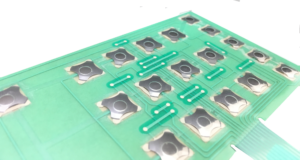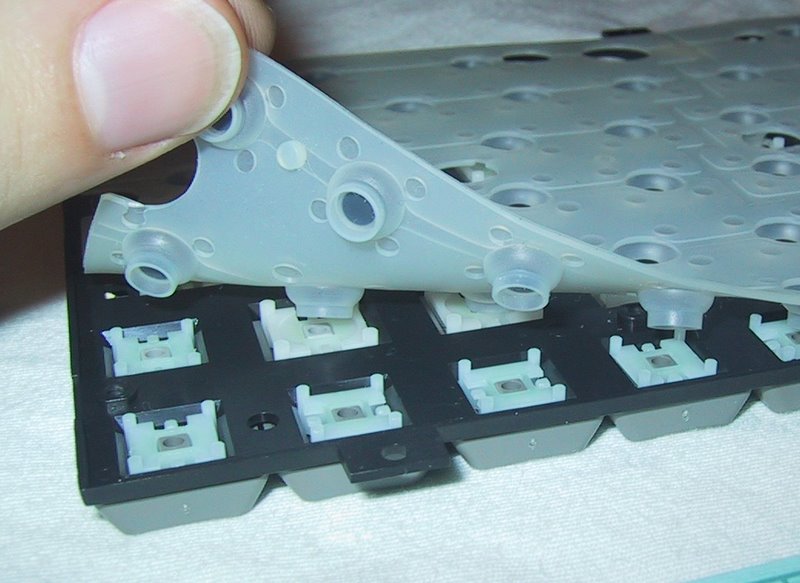How Membrane Switches Are Used in Medical Devices and Equipment
How Membrane Switches Are Used in Medical Devices and Equipment
Blog Article
Comprehending the Value of Membrane Switches in Customer User Interfaces
Membrane buttons are integral components in the design of effective user interfaces, assisting in not just capability yet additionally boosting visual charm and individual interaction. Their special attributes, such as resistance to customizable designs and ecological variables, make them appropriate for a diverse selection of applications across several industries. As we check out the numerous benefits and future trends related to Membrane modern technology, it becomes clear that these buttons are greater than simply elements; they stand for a convergence of development and practicality. The effects of this innovation on user experience deserve taking a look at even more.
What Are Membrane Buttons?

The spacer layer, which contains adhesive properties, enables the separation of the circuit layer from the overlay, guaranteeing that the button remains in a non-activated state until pushed. When stress is put on the overlay, it compresses the spacer layer, connecting the gap and completing the circuit in the underlying layer. This layout not just reduces the physical room needed for conventional mechanical switches yet also enhances the resilience of the gadget, as Membrane switches are typically immune to dust, moisture, and various other ecological factors.
Frequently located in applications varying from consumer electronics to clinical gadgets, Membrane switches are important to contemporary technology, supplying a efficient and easy to use user interface that aligns with contemporary layout needs.
Benefits of Membrane Buttons
While various switch innovations exist, Membrane Switches offer distinctive benefits that make them specifically desirable in numerous applications. One of the primary benefits of Membrane buttons is their compact layout, which enables for space-saving executions in devices where realty is restricted. Their slim profile not just boosts aesthetic appeal yet likewise facilitates light-weight building.
An additional significant advantage is their resistance to ecological factors. Membrane switches are generally sealed against dampness, dust, and impurities, making them excellent for usage sought after atmospheres, such as clinical devices and commercial tools. This resilience prolongs the lifespan of the switch, minimizing upkeep expenses and improving reliability.
Additionally, Membrane buttons can be customized to fulfill specific layout requirements, integrating special graphics and shades that enhance customer communication. Their responsive feedback choices can likewise be tailored to offer a satisfying customer experience. Additionally, Membrane buttons are cost-effective, particularly in high-volume applications, as they can be produced effectively.
Applications in Different Industries

In the customer electronics industry, Membrane switches are common in gadgets such as microwaves, cleaning makers, and remotes. Their tactile responses and aesthetic choices enhance user experience while giving a smooth, modern appearance. Additionally, automobile suppliers utilize see this here Membrane switches in dashboard controls and infomercial systems, where area is restricted, and individual interaction is critical.
Additionally, the commercial market leverages Membrane buttons in control panels for equipment and devices, allowing for intuitive operation in often extreme environments. Their resistance to chemicals and dampness makes certain durability and reliability in these applications. Overall, the adaptability of Membrane Switches contributes considerably to their extensive use, making them indispensable in numerous technological domain names.
Layout Considerations for Membrane Switches

When developing Membrane buttons, numerous key considerations should be taken into consideration to make sure optimum capability and user experience. To start with, the choice of materials is essential; choosing resilient, top notch substratums can improve the switch's longevity and resistance to environmental variables such as dampness and temperature variations.
Second of all, the design of the graphic overlay should prioritize clarity and convenience of usage. Symbols and message need to be readable, and the format must facilitate user-friendly communication (membrane switches). Additionally, tactile feedback is necessary; incorporating a tactile dome or various other mechanisms can boost the individual experience by supplying physical verification more helpful hints of activation
Another essential element is the switch's electric efficiency. Designers should guarantee that the conductive traces are correctly developed to lessen resistance and stay clear of signal interference. This entails assessing the called for actuation pressure and ensuring compatibility with the digital elements they will user interface with.

Future Trends in Membrane Technology
As technology remains to advancement, Membrane buttons are poised to evolve dramatically, driven by developments in materials and making strategies. One arising trend is the unification of sophisticated materials, such as conductive inks and flexible substrates, which enhance toughness and reduce the overall weight of Membrane buttons. These materials not just enhance the responsive feedback however additionally enable the style of buttons that can endure harsher ecological problems.
Furthermore, the assimilation of touch-sensitive modern technologies is changing traditional Membrane Switches right into even more interactive interface. Capacitive touch sensing units installed within Membrane switch panels can offer a much more responsive and user-friendly individual experience, lining up with the growing demand for streamlined, contemporary styles in customer electronics.
In addition, innovations in printing methods, such as digital and 3D printing, make it possible for rapid prototyping and personalization of Membrane buttons. This versatility enables suppliers to react quicker to market needs and consumer choices.
Last but not least, sustainability is becoming a substantial focus, with suppliers checking out green products and processes. As these patterns unfold, the future of Membrane innovation guarantees improved functionality, aesthetic charm, and environmental responsibility, solidifying their duty in advanced user interfaces throughout different industries.
Conclusion
In final thought, Membrane Switches represent an essential part in the style of user interfaces, incorporating capability with aesthetic flexibility. As advancements in modern technology proceed, the development of Membrane buttons is expected to additional improve individual interfaces, driving development and boosting usability in a progressively complicated technical landscape.
Membrane buttons are indispensable elements in the layout of efficient customer interfaces, assisting in not only functionality but likewise boosting aesthetic allure and individual communication.Membrane Switches offer as an important component in numerous customer interfaces, promoting a seamless interaction between individuals and digital tools.While numerous switch innovations exist, Membrane Switches deal distinctive benefits that make them particularly desirable in numerous applications.Furthermore, Membrane buttons can be personalized to satisfy certain layout requirements, incorporating special graphics and shades that enhance individual communication.In final thought, Membrane Switches represent a vital component in the layout of customer interfaces, integrating functionality with aesthetic versatility.
Report this page